Saint Sebastian Catacombs: Tour Review and Tips
This post may contain affiliate links. If you click one, we may earn a commission at no cost to you.
If you are spending a longer period in Rome or you are planning a repeat visit to the “Eternal City”, you have already probably seen all the most popular landmarks in the first week or so. And soon you might start to wonder what are the not-so-touristy spots that allow to delve deeper into Rome’s truly fascinating history.
If it’s you described in the first paragraph, then visiting one/few of the approximately 60 preserved catacombs in Rome might be a good option.

This article will give you my impressions and practical tips after visiting the Saint Sebastian Catacombs in May 2023. The catacombs are located under the Basilica of Saint Sebastian Outside the Walls (in Italian – Basilica San Sebastiano Fuori le Mura). The phrase “outside the walls” refers to the fact that the basilica was located beyond the Aurelian Walls, a historic boundary of Rome city proper.
Here’s my summary of why one would want to visit this landmark in one paragraph. Interested? Read on!
While visually impressive by themselves, the Saint Sebastian catacombs’ main ‘selling point’ is that with the help of a highly competent guide the visit will give you a concentrated insight into the inner workings of Roman society two millennia ago at its heyday, including customs, social order, construction methods and much more.
Visual tour
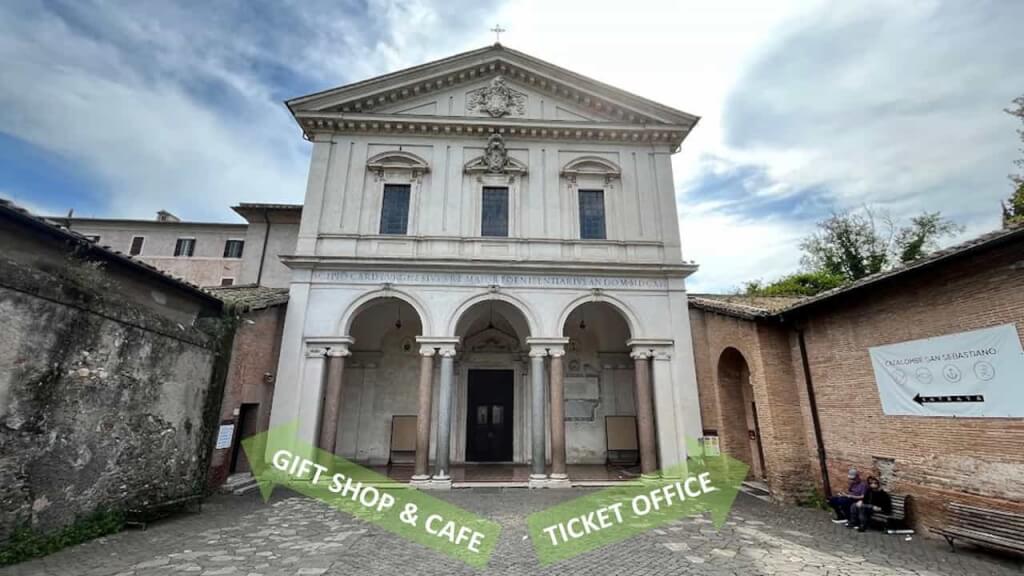
What follows are a few pictures from the catacombs visit to give you an impression of what’s it’s like and what you can expect. The pictures don’t really convey the atmosphere of the crypts, it is much more “tangible” in vivo. While the pictures give an slight aura of sterility, when in the catacombs you really get the feeling that this could still be a site used by people as part of their everyday comings and goings.

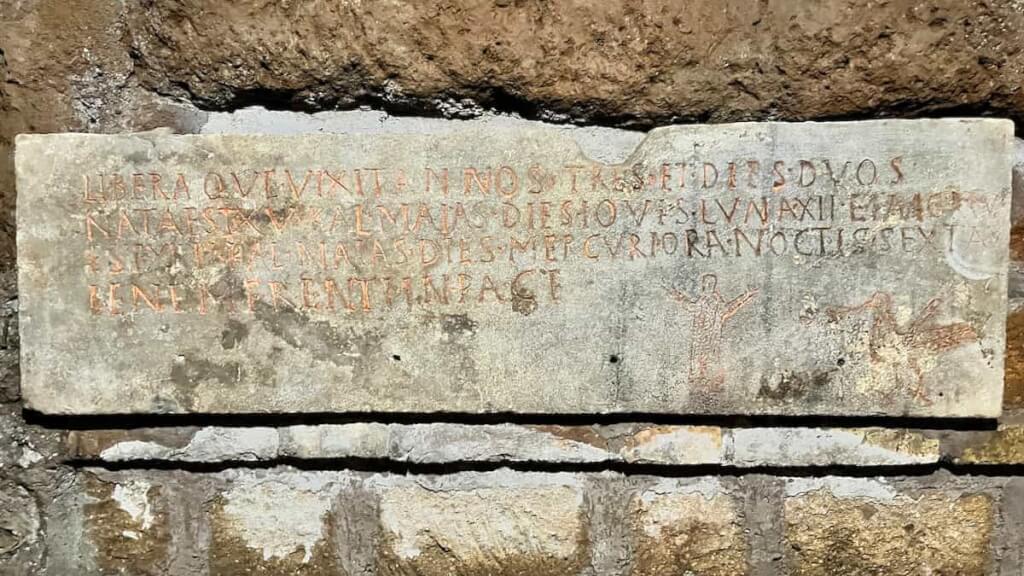
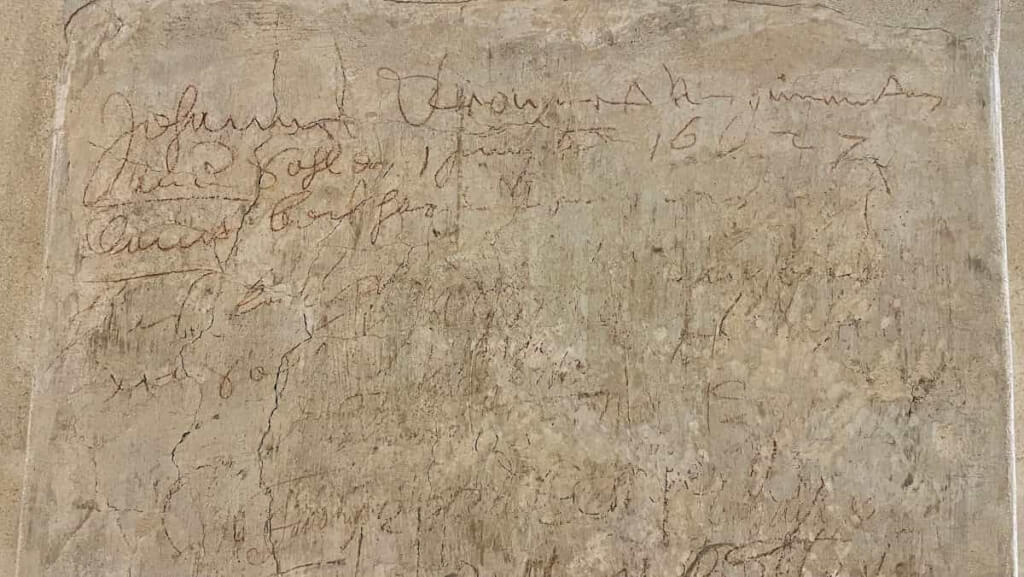


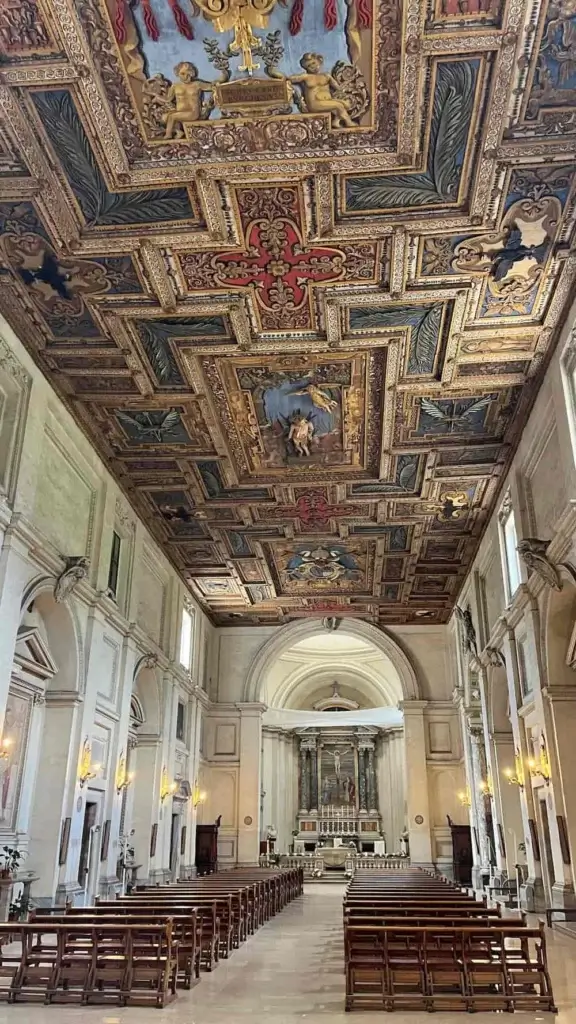
Giftshop
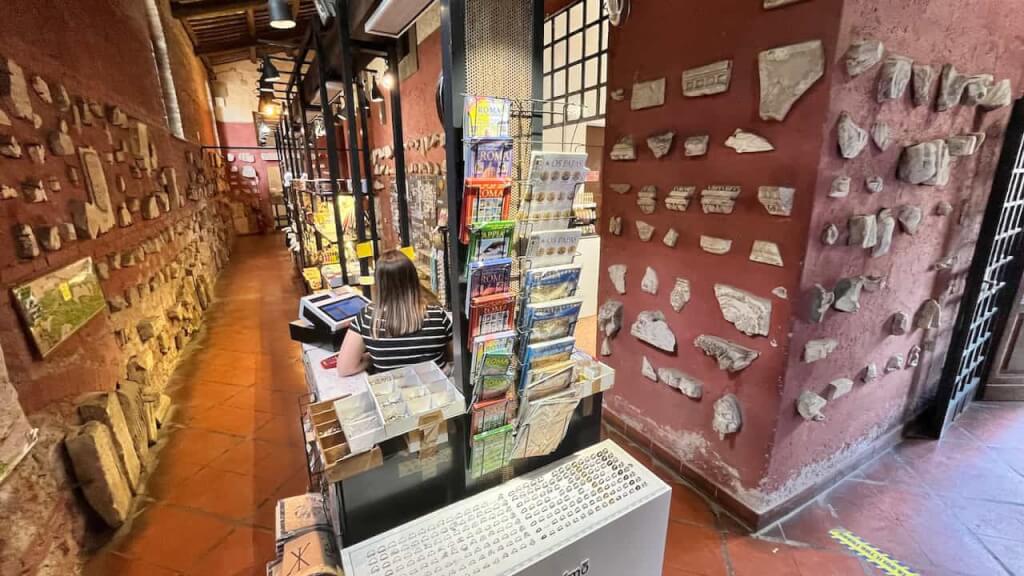
The catacombs have an Ok giftshop. There’s little that seemed to be very unique, but if you are into religious artefacts, the gift shop is as good as any location to stock up on souvenirs for yourself and your dearest.
While you can visit the gift shop and purchase stuff before the visit to the catacombs, I’d leave shopping for after the visit to not have to carry your purchases around. However, do shop before the visit, if you’re one of the latest tours of the day as the gift shop might close just as you exit the tunnels and the basilica.
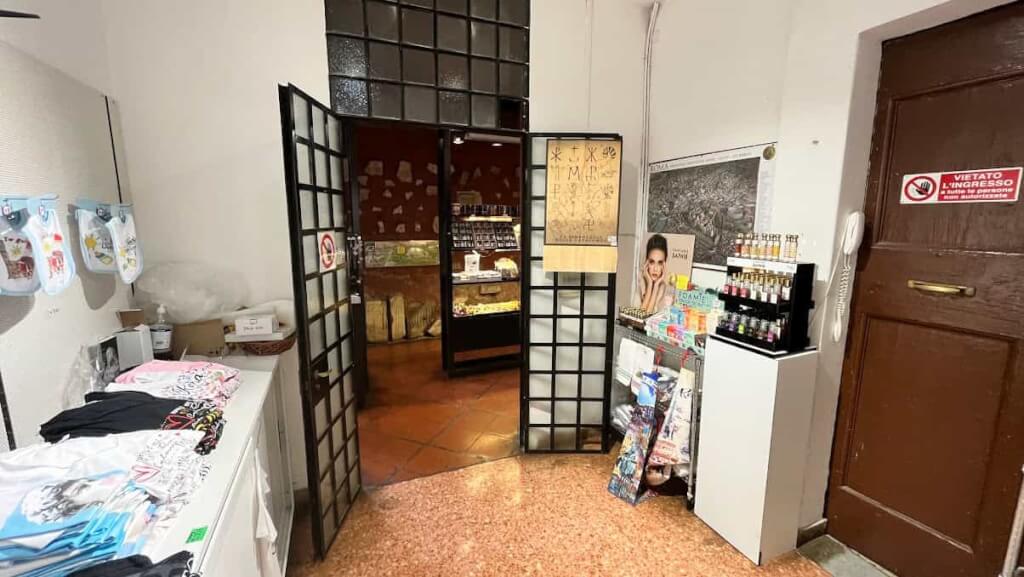
Main categories of items on offer:
- Religious artifacts: rosaries, crosses, etc.
- Jewellery
- History books
- Posters
- Rome maps
- General Rome-related souvenirs like T-shirts, towels, baby clothing
Who should visit the Saint Sebastian catacombs (and who should not)?
The Saint Sebastian catacombs are most suited for people who have an interest in Rome’s history, archaeology, and the city’s early Christian and pre-Christian/pagan culture. The more you know about any of these subjects, the more information and pleasure you will derive from the visit. But novice history fans shouldn’t shy away from a visit either.
The visit is worth the time and money if you just want to see an authentic and impressive Roman burial site with its many levels and various types of entombment chambers. But it was almost more interesting to listen to the guide’s research-based narrative about the meaning of what you see and what it tells you about the people that lived at the time when the catacombs were created and actively used.
While the guide’s “default” story was quite interesting, I suggest you use the chance and ask pretty much any history-of-Rome-related question. My native-speaker English language guide who’s living in Rome for the past 20 years was a true treasure trove of explanations and stories. I even got excellent tips about what to see in the vicinity of the catacombs after the visit.
Who should not visit the Saint Sebastian catacombs?
- People with limited mobility. Unfortunately, there are staircases and uneven surfaces making the catacombs unsuitable for people in wheelchairs or with walking difficulties. You really could not make the site accessible without significantly altering cultural heritage.
- People with severe claustrophobia. The Saint Sebastian catacombs are nowhere near as narrow, dark and deep underground as the Paris Catacombs, so most people should be fine at this site. The tour is also much shorter and you can always turn back easily. Besides, the entry ticket is only 10-14 euros so your financial loss will also not be too big in case you turn back or decide not to enter.
- People creeped out with anything death-related. While there are no bones on exhibition (I was surprised by this), the catacombs are a burial site and you clearly see that dead people were placed here in the past. There is also at least one sealed tomb where there are human remains inside.
- People who have very little interest in history. There are many visually more impressive and ‘instagrammable’ sites in Rome, so you better stick to those.
Saint Sebastian Catacombs vs Catacombs of St. Callixtus: which is better?
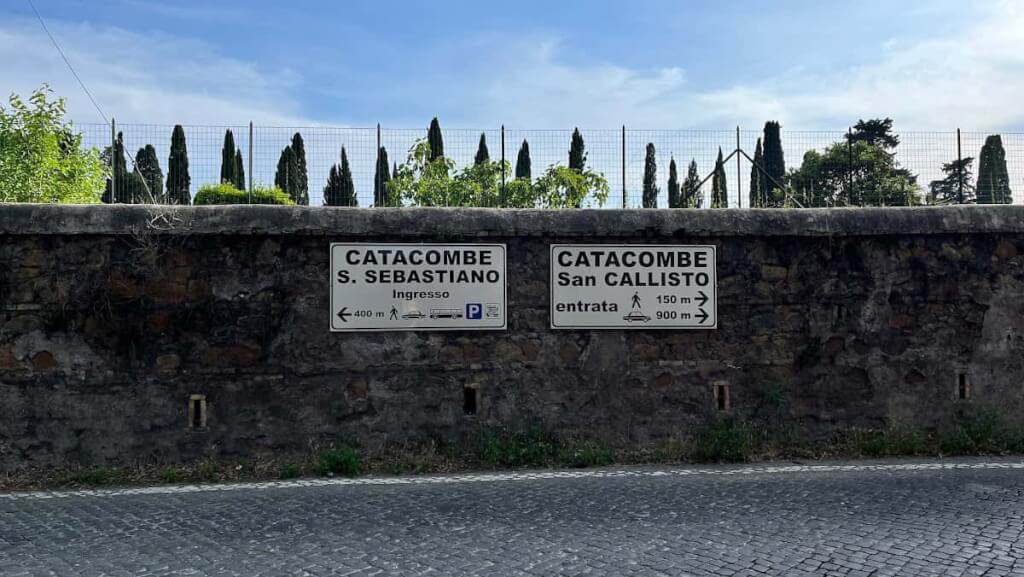
If you’ve researched the topic, you will know that the Saint Sebastian catacombs are just 700 meters apart from the catacombs of St. Callixtus. If you have the time, you can easily visit both catacombs in three hours (if you get the tickets). However, if you have to choose one, here’s a list of characteristics to help you choose one over the other.
| Saint Sebastian | St. Callixtus (St. Callisto) | |
|---|---|---|
| Total length | 12 kilometres | 20 kilometres |
| Religious affiliation | Pagan and Christian | Mostly Christian |
| Popularity among tourists | Low, no crowding | Probably the most popular catacombs in Rome, can be crowded |
| Famous burials | Only Saint Sebastian | 16 popes and at least 50 martyrs |
| Visible human remains | No | No (visit the Capuchin Crypts for this) |
| Presence of art | Very basic in the catacombs (but there’s the San Sebastian basilica just above with a major art collection and a beautiful ceiling) | Multitude of frescoes, sculptures, wall paintings |
While probably not the most appropriate characterization, the Saint Sebastian catacombs are like a boutique art gallery vs the St Callixtus catacombs being like the Louvre with the corresponding amount of tourists.

Getting tickets, working hours
Entry to the Saint Sebastian Basilica is free of charge.
Entry to the Saint Sebastian Catacombs costs 10 EUR for adults. A 7 EUR discount ticket is available for children aged 7-16, school and university groups, students of archaeology, architecture and arts, members of religious organizations upon presenting proof of membership. Children under can enter free of charge, but might not like the slightly gloomy atmosphere underground.
Because you can only enter the catacombs with a guide, there is a high likelihood you will not get on an tour with your preferred language if you just show up. First of all, non-Italian language tours are spaced throughout the day. Secondly, the particular time suited to your schedule might be sold out.
This is why I suggest that you get your tickets online. While there is a small surcharge and the online tickets cost 12 EUR (two euros more than the regular ticket at the site), you can be more certain that you will get in. I actually got bumped to a one hour later time even when I bought my ticket online. However, this was to my benefit as I got a solo tour from Nico, my great guide and an American who’s living in Rome for the past 20 years.
If you buy a ticket online, you’ll get a QR or a similar code, which you then exchange for a regular ticket at the reception office. The exchange was very smooth.
Tours are offered in Italian, English, French, German, and Spanish.
The catacombs are open from 10 AM to 4:30 PM, and last entry is at 4 PM.
If you arrive early, there is a nice courtyard with a park bench. You can also entertain yourself by visiting the gift shop and the basilica. You will get a tour of the basilica at the end of the catacombs tour, but no harm to see it in advance and twice.
Location, how to get to Saint Sebastian Catacombs
The precise address of Saint Sebastian Catacombs: Via Appia Antica, 136, 00179 Rome. However, you can just search for them on Google Maps.
By public transport
It can take you anything from 15 minutes to over one hour to get to the Saint Sebastian Catacombs by public transport. It really depends on where in Rome you are starting out. If you are leaving from the Colosseum, bus 118 will take you straight to both St Callixtus and Saint Sebastian Catacombs in 18 minutes. If your accommodation is outside the city, expect a longer commute and changing 2-3 vehicles. While Rome has an excellent public transport system when it comes to connecting various locations, it can be a time sink.
I warmly suggest you to explore walking and also combining public transport rides with using electric scooters.
While there are many navigation apps that claim to cover Rome, I found moving around with Google Maps very satisfactory. It has real public transport schedules that are dynamically updated.
One 100 minute ticket is around 1,5 euros, and there are 24-hour and longer period tickets available.
By electric scooter
Riding an electric scooter in Rome is my second favourite means of getting around after walking. I would usually use the fairly priced public transport for longer commutes and then do the “last mile” by foot or on a scooter.
When in Rome, do not automatically stick to the scooter brand you are used to at home, but check which company has the best offer. Also – even if you plan to take only one 15 minute ride, always buy a “pass”. It will most often be the same price or even cheaper as a single ride and give you the opportunity to ride more.
My two preferred scooter companies are Lime with their 60 or 100 minute pass that costs either 8.99 or 13.99 EUR or Dott with their 2 x 30 min ride offer. I noticed that I drove the scooter much more with a pass, and explored Rome more widely as I didn’t have the dreadful feeling of money seeping away with every minute of riding.
By taxi
The Catacombs of Saint Sebastian and St. Callixtus are a bit away from the Rome city centre. If you can afford it, no doubt, a taxi is the easiest way to move around in the city.
I recommend that you use the FreeNow app (Apple / Android) for hailing taxis to avoid price-related surprises. This will also let you pay with your card, rather than cash. While Uber theoretically works in Rome, I had difficulty with drivers accepting my offers; I’d request a ride and no driver would accept in for 3+ minutes. It always worked with FreeNow.
By rental car
I would only recommend using a rental car in Italy if you want to go out of Rome and other Italian cities or landmarks outside Rome. Not only is parking notoriously difficult, but you have a real risk of your rental car being scratched by other drivers. If you decide to rent a car, definitively get the damage insurance with a low co-payment. I usually forego the damage liability waiver, but I would get in Rome as respect for other people’s cars is much different in this city compared to most other European destinations.
Dress code and other preparations
When it comes to dress code, there are two main considerations: decency and warmth.
Most religious sites in Rome require that your shoulders and knees are covered. You might be turned away if you show up in shorts and a t-shirt, which is what you might want to wear in Rome during the summer season. As far as I’m aware there is no “decency” clothing rental at the Saint Sebastian Catacombs similar to what is offered in some monasteries. So come prepared.
That being said, such combinations and jeans/khakis and a short-sleeved short for men and something similar for women is ok. You definitively don’t have to “dress up” for a visit to the catacombs.
Being “decently” dressed also solves the issue of warmth. The catacombs have more or less the same temperature all year round, around 15-17 degrees Celsius / 59-63 Fahrenheit. While official information advises you to dress warmly for the visit, most people find temperature in the catacombs a pleasant refuge after the heat above and don’t need extra clothing. I’d only take an extra layer for children and people who are on average feeling colder.
The only thing I’d advise against would probably be high heels and shoes or clothing that you want to keep pristinely clean. In some sections the path is packed soil, and the walls are from a rock-like material called ‘pozzolan’, so you can get some smudges during the visit.
Short history of Saint Sebastian catacombs
In case you are wondering who is Saint Sebastian, he supposedly was a Praetorian guard for the emperor Diocletian and had turned a Christian. When he started to proselytize among his peers, he was killed by first being tied to a tree and shot with arrows, and then clubbed to death. Saint Sebastian became a martyr in Catholic and Orthodox Christian traditions, and his remains are supposedly housed in the Basilica of Saint Sebastian that was built above the catacombs of the same name.
The underground area near the Saint Sebastian Catacombs was used as a pozzolan mine until the 2nd century AD. After mining stopped, people started to use the tunnels for burials.
Initially, these catacombs were used as burial sites for pagan Romans, who were laid to rest in simple niches known as loculi. With the spread of Christianity, the catacombs gained importance due to the growing need for burial spaces for Christians.
Romans around the turn of the millennium did not practice moving bones and re-using graves, hence, there was a constant need for new space in the tunnels. For this reason the Saint Sebastian catacombs are around 12 kilometers / 8 miles in total length (you only get to visit a small segment of the tunnels during your visit).
Speaking of length of the tunnels in this and other catacombs, I finally understood how Romans could hide in the catacombs and not be found by invaders for months. This puzzled me in the past, but if you have a 12 kilometre tunnel system in only one catacomb and there are ate least 60 of the in Rome, these could indeed give refuge to a large number of people.
The catacombs became a place of worship and refuge for martyrs, such as Saint Sebastian, who reportedly suffered his martyrdom in the catacombs before being buried there. His remains were later moved to the Basilica di San Sebastiano Fuori le Mura, also known as the Basilica of St Sebastian Outside the Walls.
Earliest building of what is now the Basilica of St Sebastian were originally constructed in the early 4th century by Emperor Constantine, after the legalization of Christianity. It was built over the catacombs to honour Saint Sebastian and other martyrs buried in the area. Throughout the centuries, the basilica has undergone numerous significant restorations and architectural modifications, and now shows little of its humble beginnings.
This Wikipedia article provides further information and other sources about the catacombs. Read more about Saint Sebastian here.
Other famous catacombs in Rome
As already mentioned, there are over 60 known catacombs in and around Rome. However, not all of them are accessible to the general public and not all are probably worth a visit. Besides the catacombs of Saint Sebastian, if you are just planning your visit to Rome, you could consider these alternatives:
- Catacombs of St. Callixtus
- Capuchin Crypts
- Catacombs of Domitilla
- Catacombs of Priscilla
Famous landmarks near the Saint Sebastian catacombs

- The Appian Way (Via Appia Antica). One of the oldest and most important Roman roads in Italy, dating back to approximately 312 BCE and surprisingly well preserved up to this day. If you have the time, walk, scooter or bike on it. The further you get away from Rome proper, the picturesque it becomes. It is literally next to the catacombs. What follows below are just some of the landmarks on the Appian Way near the Saint Sebastian catacombs, but there are literally tenths of landmarks every 50-200 meters. Google Maps provides at least a name of the object you are passing by, so keep the app open.
- Mausoleo di Cecilia Metella. Another impressive sight in the vicinity is the Mausoleo di Cecilia Metella on the Appian Way around a kilometer from the catacombs of Saint Sebastian. Cecilia Metella was an influential figure in ancient Rome, as the wife of Marcus Licinius Crassus and daughter of the Roman consul Quintus Caecilius Metellus. The mausoleum is part of a fortress-like structure and gives a nice overview of Roman architecture. 450 meters from the catacombs.

- Circus of Maxentius. An impressively well-preserved ancient Roman circus located between the second and third mile of the Appian Way, some 300 meters from the catacombs.
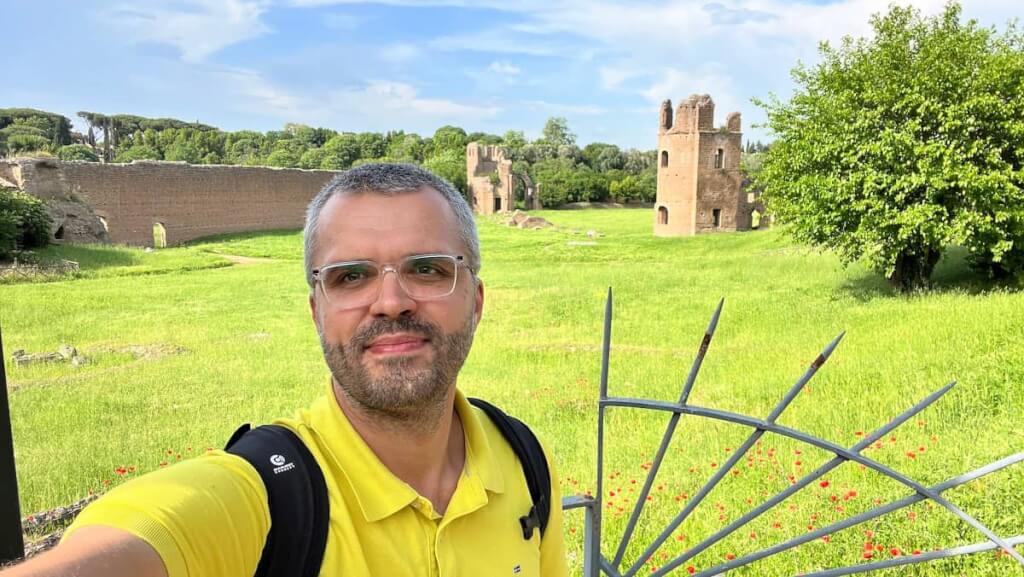
- Villa dei Quintili. The grand remains of a Roman villa that once belonged to the wealthy Quintilii brothers and now serves as a historical and archaeological site. 6.5 km from the catacombs.
